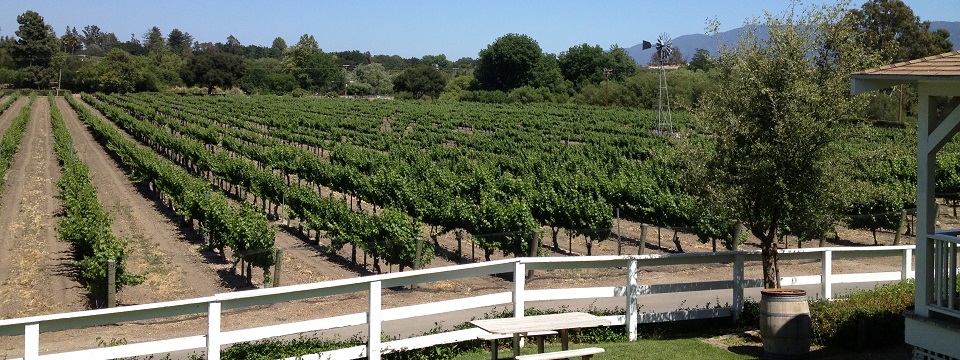Land Use and CEQA Environmental Review
Land use decisions are generally made by cities, and by Santa Barbara County in unincorporated areas. These agencies have long-term plans and permit processes that guide land development decisions. Other agencies, such as the Coastal Commission, State Lands Commission, federal land agencies, and special districts such as water and sanitation districts, may also have a say in land-use decisions.
Land use decisions affect air quality. For example, a newly constructed business may emit air pollution directly. Commercial, industrial, and residential developments contribute to short- and long-term air quality impacts through the use of fuels, consumer products, vehicles, and other equipment. Because cars and trucks represent a large portion of the smog-forming pollution in our county, the impacts of land-use decisions are important.
The California Environmental Quality Act (CEQA) requires state and local agencies to identify and reduce the environmental impacts of their decisions. Several different types of documents may be prepared under CEQA, including Notices of Exemption, Initial Studies, Negative Declarations or Mitigated Negative Declarations, and Environmental Impact Reports (EIRs). For more information on CEQA, see OPR’s CEQA home page.
Depending on circumstances, the District may assume the following roles:
- As a lead agency the District prepares environmental documents for its own discretionary actions, such as air quality plans and rules. The District may also be a CEQA lead agency for District permits if the impacts of the permit action were not addressed in a land-use decision or other agency action.
- As a responsible agency the District reviews environmental documents prepared by other lead agencies to ensure that air quality impacts were addressed and the document is adequate to fulfill CEQA requirements for APCD permit actions. The District’s jurisdictional area includes unincorporated areas of Santa Barbara County, the cities of Santa Maria, Guadalupe, Lompoc, Buellton, Solvang, Goleta, Santa Barbara, and Carpinteria, and offshore of Santa Barbara County.
- As a concerned agency the District reviews development projects, within the county and offshore of Santa Barbara County, that may have air quality impacts and provides guidance to mitigate adverse impacts.
The District has identified some potential strategies for local GHG mitigation that could be implemented in Santa Barbara County. The District solicited feedback from the community on these strategies in a series of workshops. The strategies researched by the District and the input received from the public has been summarized and is available at GHG Mitigation Strategies in Santa Barbara County.
This is an evolving policy area. As the California Air Resources Board and other state agencies and offices develop policies and regulations to address greenhouse gas (GHG) emissions, the interface between the California Environmental Quality Act (CEQA) and these other programs may change. Following is a list of activities and resources related to this topic:
The District Environmental Review Guidelines includes greenhouse gas thresholds of significance for new or modified stationary sources. For more information see our webpage Greenhouse Gases and CEQA.
The California Office of Planning & Research (OPR) CEQA Guidelines establish a framework for addressing global climate change impacts in the CEQA process, including the Environmental Checklist Form (Appendix G), the Energy Conservation appendix (Appendix F), and section §15064.4 which provides an approach to assessing impacts from GHGs. For additional information, visit the Resources Agency’s website on CEQA Guidelines.
The California Air Pollution Control Officers Association (CAPCOA) has developed a resource guide, CEQA and Climate Change, in January 2008 to address GHG emissions from projects subject to CEQA. This resource guide was prepared to support local governments as they develop their programs and policies around climate change issues. It is not a guidance document, and is not intended to dictate or direct how any agency chooses to address GHG emissions. Rather, it is intended to provide a common platform of information about key elements of CEQA as they pertain to GHGs, including an analysis of different approaches to setting significance thresholds. The resource guide also contains an organized review of available tools and models for evaluating GHG emissions, and an overview of strategies for mitigating potentially significant GHG emissions from projects.
- The California Attorney General’s Office has compiled a comprehensive list of mitigation measures that can be applied to land use development projects, entitled Addressing Climate Change at the Project Level.
- California Air Pollution Control Officers Association (CAPCOA)’s Handbook for Analyzing Greenhouse Gas Emission Reductions, Assessing Climate Vulnerabilities, and Advancing Health & Equity provides description and quantification of many GHG mitigation measures.
In 2005, the California Air Resources Board (CARB) developed an Air Quality and Land Use Handbook that was intended to serve as a general reference guide for evaluating and reducing air pollution impacts associated with new land use development projects. As documented in the handbook and in subsequent health studies, living in proximity to freeways and high traffic roadways leads to adverse health effects beyond those associated with regional air pollution. CARB’s handbook provides recommendations for appropriate distances between sources of air pollution and sensitive land uses, such as residences.

In 2015, the EPA released a document that both shows the importance of reducing children’s exposure to traffic-related air pollution and what schools and parents can do to reduce children’s exposure. For more information see Best Practices for Reducing Near-Road Air Pollution at Schools.
In April of 2017, the California Air Resources Board (CARB) released a Technical Advisory, “Strategies to Reduce Air Pollution Exposure Near High-Volume Roadways.” In response to this Technical Advisory, APCD has prepared a supplemental guidance document, District Guidance for Development near Busy Roadways in Santa Barbara County, that highlights relevant sections of the Technical Advisory and provides additional context for Santa Barbara County. For more information on the research behind this Advisory, see “Status of Research on Potential Mitigation Concepts to Reduce Exposure to Nearby Traffic Pollution” (CARB, 2012).
In order to provide consistency to lead agencies, project proponents, and the general public throughout the state, the California Air Pollution Control Officers Association (CAPCOA) prepared a guidance document, entitled “Health Risk Assessments for Proposed Land Use Projects,” to assist lead Agencies in complying with the requirements of the California Environmental Quality Act (CEQA) when projects may involve exposure to toxic air contaminants. This document, which can be accessed from the CAPCOA website, focuses on the acute, chronic, and cancer impacts of sources that may undergo CEQA review. It also outlines the recommended procedures to identify when a project should undergo further risk evaluation, how to conduct the health risk assessment (HRA), how to engage the public, what to do with the results from the HRA, and what mitigation measures may be appropriate for various land-use projects. With respect to health risks associated with locating sensitive land uses in proximity to freeways and other high traffic roadways, HRA modeling may not thoroughly characterize all the health risk associated with nearby exposure to traffic-generated pollutants. Therefore, Santa Barbara County APCD does not recommend using HRA modeling as a tool for assessing health risk impacts for these types of projects.
 Here are some helpful tools to estimate winery project emissions for environmental review.
Here are some helpful tools to estimate winery project emissions for environmental review.
- Winery Project Information Worksheet– This worksheet lists all the required project information to use the Winery Excel and CalEEMod for project emissions estimates. Please fill out the worksheet prior to using the Winery Excel.
- Winery Excel– This Excel will estimate emissions from the winery fermentation process and equipment, such as boilers and emergency generators. Additionally, the Winery Excel will calculate the project specific trip rate needed for the CalEEMod emissions estimate.
- How to Calculate Winery Emissions for CEQA– This pdf is a guide on how to use the Winery Excel and CalEEMod to estimate winery project emissions.
- See answers to Frequently Asked Questions about land use.
- For more information on CEQA, visit OPR’s CEQA home page.
- For more information on the GHG threshold adoption process, see our webpage on Greenhouse Gases and CEQA.
- For more information on the California Emission Estimator Model (CalEEMod), see www.caleemod.com.
- See information on Building Stronger Communities.
For more information on the District’s Land Use and Environmental Review program, contact [email protected].

